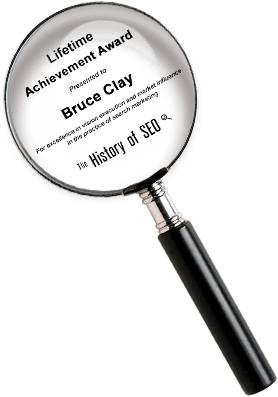How do I secure top-level support for SEO as a strategic initiative?

- Overview
- What I Think
- Deep Dive: Building Executive Alignment
- 24-Step Action Plan
- Quick Solutions
- About Us
Overview
Limited resources, delayed implementation of SEO recommendations, or pushback from departments with different priorities — do these sound familiar? You may have experienced these in your own organization.
SEO needs support from the top in order to be an effective strategy within any business, or it will fail. Without it, even with an incredible plan, team and all-inclusive roadmap in place, your efforts can run into difficulties. It’s frustrating, but it’s also avoidable.
Securing top-level support means shifting how SEO is perceived. It’s not a cost center or a set of technical tweaks — it’s a long-term growth engine, one that touches every part of the business, from content and UX to development and branding.
Whether you’re pitching a CMO, briefing a CTO, or aligning a CEO’s vision with organic growth, we’ll show you how to build a compelling case, translate SEO outcomes into business value and turn stakeholders into champions.
What I Think
I’ve worked with organizations where every SEO recommendation gathered dust simply because leadership didn’t see it as critical. A clear, consistent narrative — grounded in business metrics — often changes that perspective. When I’ve linked SEO goals to revenue and lead targets, executives start paying attention and allocating resources.
Framing SEO as a company-wide performance lever elevates its priority. Too often it’s relegated to a marketing sidebar, but it deserves a seat at the strategy table. In my experience, that shift happens when you present SEO as an essential ingredient in broader business success.
It’s also about building trust through early wins. Landing a few early wins does more than just prove your point — it shows that real progress is possible. When people see things working, even on a small scale, they start to believe the team is moving in a new and promising direction. That belief creates momentum. It gets people energized.
And once decision-makers see those wins for themselves, it’s much easier to get their support for what comes next. That support makes space for bigger moves — like getting teams across departments to actually pull in the same direction.
Deep Dive: Building Executive Alignment
To achieve SEO executive buy-in, begin by mapping your SEO objectives directly to the company’s fiscal goals. Want leadership to care about SEO? Show them how a small lift in traffic — say, 10% — can turn into real revenue.
When you explain it in dollars, not just clicks, it’s easier to get buy-in. You stop being seen as “the SEO person” and start being seen as someone who helps drive the business.
Want leadership to care even more about SEO? Show them our Free Executive’s Guide to SEO video training.
To move in a productive direction, it’s crucial to gather the right people — the ones who can actually make decisions — to meet with you. When funders see that they are part of the act from the outset, they are much more apt to support an initiative and far more likely to nudge it toward success. Early buy-in from funders is early buy-in from stakeholders in the journey toward change.
Leverage success stories from similar businesses. Highlight a peer case study where board-level endorsement accelerated implementation and ROI. Link to the main article’s Politics section for context on how cross-team trust can transform an initiative. If you want leadership to act, show them what’s possible. Real outcomes spark interest and lower the hesitation that often slows things down.
Start with a quick summary they’ll actually read. What’s the upside? How big is the opportunity? What’s needed to get results? Keep it short and to the point — anything too long will be skipped. And tie everything back to the metrics they care about, like leads, conversions, or revenue. That’s what moves decisions forward.
Then figure out who’s doing what. Who needs to approve each step? When do they need to do it? Map it out so no one’s guessing. When roles and timelines are clear, projects don’t get stuck.
Check in regularly — once a month, once a quarter, whatever works. Just don’t go silent. Share real updates: what’s done, what’s moving, and what’s delivering results. If leadership can see steady progress, they’re far more likely to stay engaged.
And when something goes well, don’t keep it quiet. Share it. A quick email about a traffic boost or ranking gain reminds everyone that the work is paying off. These moments build momentum. They show that SEO isn’t just a technical function — it’s a growth driver. And when you regularly highlight wins, you help create a culture where optimization is valued, supported, and celebrated across the board.
24-Step Action Plan
- Identify three core business metrics (revenue, leads, conversions)
- Map each SEO recommendation to one of those metrics
- Quantify expected impact for each mapped recommendation
- Prepare a one-page executive summary with three bullets: opportunity, impact, investment
- Schedule a 30-minute leadership workshop
- Develop a brief slide deck with charts linking SEO to financial goals
- Bring in the folks who actually make the calls—execs, leads, whoever’s going to help move things forward
- Keep the conversation focused on what you can do that’s meaningful and not a giant lift
- Collect feedback and secure verbal agreement on top priorities
- Draft a shared implementation map outlining roles and deadlines
- Distribute the map to all attendees for review
- Finalize the map with any requested edits
- Publish a live dashboard tracking progress and KPI shifts
- Check in once a month to go over progress and keep things moving forward
- Automate key metric reports to leadership via email
- Document each completed action and its results
- Share early wins through company-wide channels
- Gather testimonials from internal champions
- Update case studies with real data for ongoing credibility
- Revisit the stakeholder alignment strategy quarterly
- Refresh the executive summary with updated metrics
- Plan the next round of high-impact SEO initiatives
- Host a follow-up workshop to maintain engagement
- Repeat this cycle annually to reinforce a culture of optimization
Ready to rally your leadership behind SEO?
Contact us today to build your executive alignment roadmap.
Quick Solutions
- How do I prioritize SEO audit tasks for quick wins?
- How do I ensure clients follow through on our SEO recommendations?
About Us
Since 1996, Bruce Clay Inc. has been right at the leading edge of the SEO industry. We are sharp, we are innovative, and we present strategies that are not only driven by data but also very clearly result in significant outcomes.
26,000+ professionals, marketers and SEOs read the Bruce Clay Blog
Subscribe now for free to get:
- Expert SEO insights from the "Father of SEO."
- Proven SEO strategies to optimize website performance.
- SEO advice to earn more website traffic, higher search ranking and increased revenue.

Comments are closed








